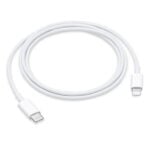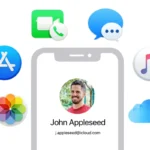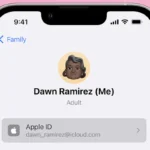Lightning to USB-C adapters are becoming essential accessories for many iPhone users. These small devices allow you to connect your Lightning accessories to newer USB-C enabled iPhones and iPads. You can use these adapters for charging, data transfer, and audio functions, making them versatile tools for maintaining compatibility between your devices.
Apple’s switch to USB-C ports on some devices has created a need for these adapters. You might need one if you have an iPhone 15 or newer iPad model but still want to use your existing Lightning cables and accessories. Many third-party manufacturers offer affordable alternatives to Apple’s official adapter.
When choosing an adapter, consider factors like charging speed, data transfer rates, and build quality. Some adapters support fast charging while others may be limited to slower speeds. You’ll also want to ensure the adapter is compatible with your specific device model and use case.
| Feature | Apple Adapter | Third-Party Options |
|---|---|---|
| Price | Higher | Often lower |
| Quality | Guaranteed | Varies |
| Speed | Full support | May be limited |
| Warranty | Included | Varies |
Lightning to USB-C Adapter Guide
What is a Lightning to USB-C Adapter?
A Lightning to USB-C adapter is a small accessory that allows you to connect devices with a Lightning port (commonly Apple iPhones, iPads, and some accessories) to USB-C cables or chargers. This adapter bridges the connection between older Lightning devices and newer USB-C peripherals or chargers.
Why Do You Need a Lightning to USB-C Adapter?
- Charging: Connect your Lightning device to modern USB-C power adapters for faster or more convenient charging.
- Data Transfer: Transfer files between Lightning devices and USB-C equipped computers or devices.
- Accessory Compatibility: Use USB-C accessories like hubs, audio devices, or external storage with Lightning devices.
- Future-proofing: As USB-C becomes the universal standard, adapters help maintain compatibility.
Types of Lightning to USB-C Adapters
- Lightning Female to USB-C Male Adapter
- Connects Lightning cables/devices to USB-C ports.
- Useful for charging Lightning devices from USB-C chargers.
- USB-C Female to Lightning Male Adapter
- Allows USB-C cables to connect to Lightning devices.
- Common for charging iPhones with USB-C cables.
- Lightning to USB-C Audio Adapters
- Enable Lightning devices to connect to USB-C headphones or audio equipment.
How to Choose the Right Lightning to USB-C Adapter
1. Compatibility
- Ensure the adapter supports your device model and iOS version.
- Check if it supports fast charging (Power Delivery) if you want faster charging speeds.
2. Data Transfer Speed
- For syncing and file transfer, look for adapters supporting USB 3.0 or higher speeds.
- Basic adapters may only support charging, not data transfer.
3. Build Quality
- Choose adapters with durable materials and reinforced connectors.
- Braided cables or metal housings increase longevity.
4. Brand and Certification
- Prefer Apple-certified (MFi) adapters for guaranteed compatibility and safety.
- Reputable brands like Anker, Belkin, and Apple itself are recommended.
How to Use a Lightning to USB-C Adapter
- Connect the Adapter: Plug the adapter into your Lightning device or USB-C cable, depending on the adapter type.
- Attach the Cable or Accessory: Connect the USB-C cable or accessory to the adapter.
- Power On: If charging, plug the USB-C charger into a power source.
- Data Transfer: For syncing, connect to a computer with USB-C ports and use iTunes or Finder on Mac.
- Audio Use: Connect USB-C headphones or DACs through the adapter for audio playback.
Popular Use Cases
- Charging an iPhone with a USB-C charger.
- Connecting Lightning headphones to a USB-C device.
- Syncing data between iPhone and USB-C MacBook.
- Using USB-C hubs with Lightning iPads (via adapter).
Troubleshooting Tips
- If the device doesn’t charge or sync, try disconnecting and reconnecting the adapter.
- Ensure the adapter and cables are Apple-certified.
- Restart your device if connections fail.
- Update your iOS to the latest version.
Recommended Adapters and Cables (2025)
- Apple Lightning to USB-C Cable (official)
- Anker USB-C to Lightning Adapter (durable, fast charging)
- Belkin USB-C to Lightning Cable (MFi certified)
- Apple Lightning to USB-C Adapter (official, supports data and charging)
Summary
| Feature | What to Look For |
|---|---|
| Compatibility | MFi certification, device support |
| Charging | Supports USB Power Delivery (PD) |
| Data Transfer | USB 3.0 or higher for fast syncing |
| Build Quality | Durable, reinforced connectors |
| Brand | Apple, Anker, Belkin recommended |
Adapters make it easy to bridge the gap between Lightning devices and the increasingly popular USB-C standard, ensuring your accessories, chargers, and data cables stay compatible.
Understanding Lightning to USB-C Adapters
Lightning to USB-C adapters bridge the gap between Apple’s proprietary connector and the widely-used USB-C standard. These adapters enable device compatibility and data transfer between different ports.
Basics of USB-C and Lightning Connectivity
USB-C is a universal connector that works with many devices. It offers fast charging and data transfer speeds. Lightning is Apple’s proprietary port found on iPhones and some iPads.
Apple’s USB-C to Lightning Adapter allows you to use Lightning accessories with USB-C devices. This adapter supports charging, data transfer, and audio functions.
The adapter provides up to 24W charging power for iPhones and iPads with USB-C ports. For faster charging, connect your device directly to a power supply with a USB-C cable.
USB-C to Lightning adapters don’t need their own power source. They draw power from the connected iPhone or iPad to function.
Types of Lightning to USB-C Adapters
There are several types of Lightning to USB-C adapters:
- Charging adapters: Focus on power delivery
- Data transfer adapters: Allow file syncing between devices
- Audio adapters: Let you use Lightning headphones with USB-C devices
| Adapter Type | Primary Function | Compatible Devices |
|---|---|---|
| Charging | Power delivery | iPhones, iPads |
| Data Transfer | File syncing | Computers, phones |
| Audio | Sound output | Headphones, speakers |
MFi-certified adapters ensure compatibility and safety with Apple devices. Look for this certification when choosing an adapter.
Some adapters offer multiple functions in one device. These can be useful if you need versatility in your connections.
Charging and Data Transfer Capabilities
Lightning to USB-C adapters offer efficient charging and quick data transfer. These features enhance device connectivity and usability across different platforms.
Charging Your Devices Efficiently
Lightning to USB-C adapters support fast charging for Apple devices. Many adapters can deliver up to 18W power output. This enables quicker battery replenishment for iPhones and iPads.
Apple’s Lightning to USB-C Adapter supports charging, data transfer, and audio functions. It’s compatible with CarPlay, making it versatile for in-car use.
Some third-party options like the Anker 541 USB-C to Lightning Cable support charging up to 30W. This cable uses eco-friendly bio-based materials and offers a 20,000-bend lifespan.
High-Speed Data Transfer Rates
USB-C to Lightning adapters enable faster data transfer compared to older USB standards. Many adapters support data transfer speeds up to 480 Mbps.
This speed allows for quick file transfers between your devices. You can move photos, videos, and documents from your iPhone to your computer swiftly.
Here’s a comparison of data transfer speeds:
| Connection Type | Maximum Data Transfer Speed |
|---|---|
| USB 2.0 | 480 Mbps |
| USB 3.0 | 5 Gbps |
| USB 3.1 Gen 2 | 10 Gbps |
Some adapters support both charging and data transfer simultaneously. This dual functionality lets you charge your device while syncing or backing up data.
Compatibility and Usage
Lightning to USB-C adapters bridge the gap between older Apple devices and newer USB-C technology. These adapters enable charging, data transfer, and audio functions across different device generations.
Adapters for Apple Devices
The Apple USB-C to Lightning Adapter works with a wide range of Apple products. It supports iPhones, iPads, and iPods with Lightning ports. This adapter allows you to connect your Lightning accessories to USB-C enabled devices like the iPhone 15.
You can use these adapters to charge your devices. They support fast charging for compatible iPhone models when paired with appropriate USB-C power adapters. The maximum charging output is 24W for iPhone or iPad models with USB-C connectors.
Data transfer is another key function. You can sync your devices or import photos and videos using these adapters.
Expanding Functions with Adapters
Lightning to USB-C adapters offer more than basic connectivity. They enable audio playback, allowing you to use Lightning headphones with USB-C devices. This feature is particularly useful if you’ve invested in Lightning audio accessories.
CarPlay compatibility is a significant advantage. You can connect your iPhone to your car’s infotainment system using these adapters. This allows you to use navigation, make calls, and control music through your car’s display.
Some adapters support multiple functions simultaneously. You can charge your device, transfer data, and play audio through a single adapter. This versatility makes them valuable for users transitioning between Lightning and USB-C ecosystems.
| Adapter Function | Compatibility |
|---|---|
| Charging | iPhone, iPad, iPod touch |
| Data Transfer | iOS, iPadOS devices |
| Audio | Lightning headphones, CarPlay |
| Fast Charging | Select iPhone models |
Purchasing and Availability
Lightning to USB-C adapters are widely available through various retail channels. Pricing and purchase options differ based on location and retailer policies.
Buying Adapters in the United States
Apple Stores and Best Buy are top options for buying Lightning to USB-C adapters in the U.S. Apple offers their official adapter for $29.99. Best Buy stocks both Apple and third-party options.
You can order online for home delivery or in-store pickup at most retailers. Shipping is often free for orders over a certain amount.
Many carriers like T-Mobile and Verizon also sell adapters in their retail locations. This is handy if you’re upgrading your phone and need an adapter right away.
International Purchase Options
If you’re outside the U.S., you have several ways to get a Lightning to USB-C adapter:
- Local Apple Stores or authorized resellers
- Amazon’s global shipping program
- Region-specific online retailers
Pricing may vary by country due to import fees and taxes. Check shipping policies carefully when ordering from U.S.-based stores to avoid surprises.
Some countries have restrictions on electronics imports. Research your local laws before attempting to ship adapters internationally.
Financial Options and Policies
Apple offers flexible payment plans for eligible products:
| Plan | APR | Eligibility |
|---|---|---|
| Apple Card Monthly Installments | 0% | U.S. customers, select products |
| Standard Apple Card purchase | Variable | Any Apple purchase |
To use these options, you must apply for an Apple Card through Goldman Sachs Bank USA. Credit approval is required.
Best Buy provides its own credit card with special financing on larger purchases. Terms vary, so read the agreement carefully before signing up.
Many retailers offer price matching. This can save you money if you find a better deal elsewhere. Always check return policies before buying, especially for international orders.
Frequently Asked Questions
Lightning to USB-C adapters offer versatility for connecting Apple devices to newer USB-C ports. These accessories support various functions and come from different manufacturers.
Is the adapter compatible with all Lightning connector devices?
Most Lightning to USB-C adapters work with iPhones, iPads, and other Apple devices that have a Lightning port. This includes models released after the iPhone 8 and iPad Pro (2018).
Check the product specifications to confirm compatibility with your specific device.
Can the adapter be used to charge devices as well as transfer data?
Yes, Lightning to USB-C adapters typically support both charging and data transfer. You can use them to charge your iPhone or iPad when connected to a USB-C power adapter.
Some adapters may offer faster charging speeds than others. Look for models that support Power Delivery for optimal charging performance.
What is the data transfer speed of the adapter?
Data transfer speeds vary between adapters. Most support USB 2.0 speeds, which is about 480 Mbps.
Higher-end adapters may offer faster USB 3.0 or 3.1 speeds. Check the product details for specific transfer rate information.
Does the adapter support audio output for headphones and speakers?
Many adapters support audio output. The LMUBOY Lightning to USB-C Adapter, for example, includes an advanced audio decoder for high-quality sound.
Not all adapters have this feature. Read the product description carefully if you need audio support.
What are the differences between original and third-party adapters?
Apple-branded adapters often offer guaranteed compatibility and may have additional features. They tend to be more expensive.
Third-party adapters can be more affordable and may offer unique designs or features. Quality can vary, so choose reputable brands for the best experience.
Can the adapter be used with Apple CarPlay?
Most Lightning to USB-C adapters work with Apple CarPlay if your car has a USB-C port. Simply connect your iPhone to the car’s USB-C port using the adapter.
Check your car’s manual and the adapter specifications to ensure compatibility.
| Feature | Apple Adapter | Third-Party Adapter |
|---|---|---|
| Price | Higher | Often lower |
| Quality | Consistent | Varies |
| Features | Standard | May have extras |
| Warranty | Apple support | Varies by brand |






